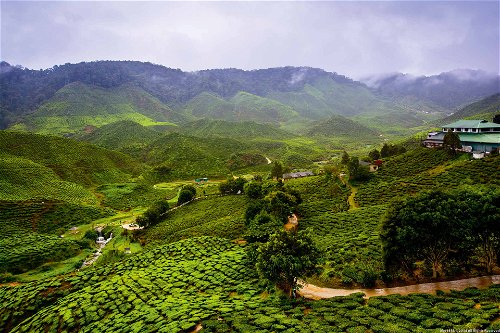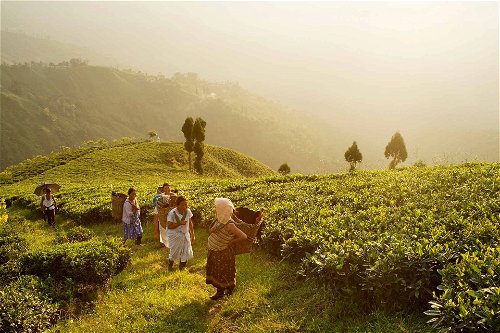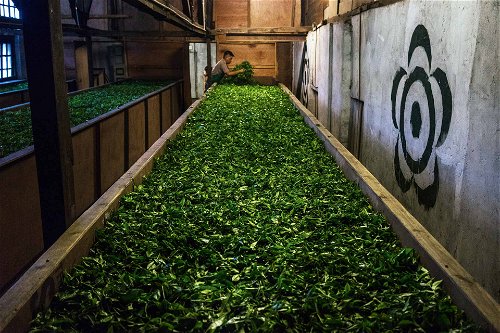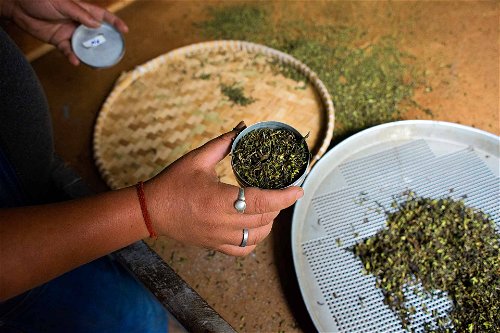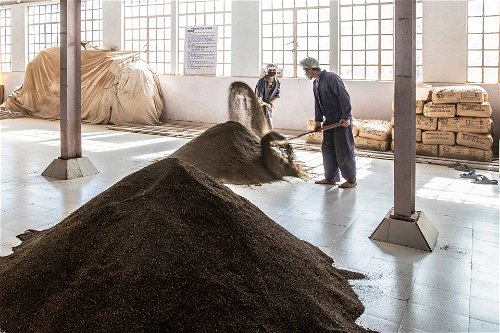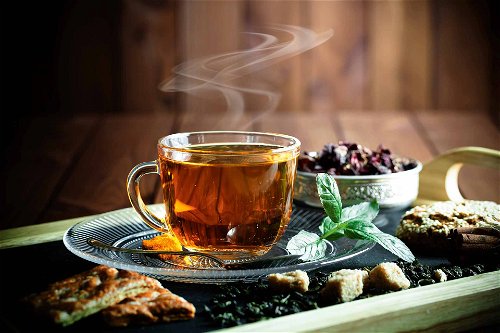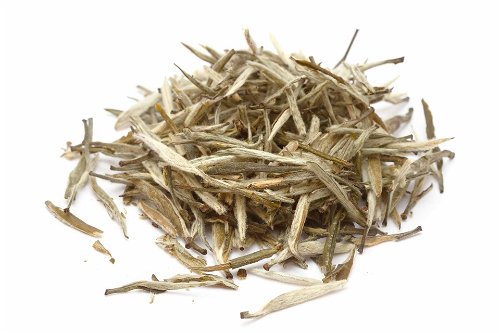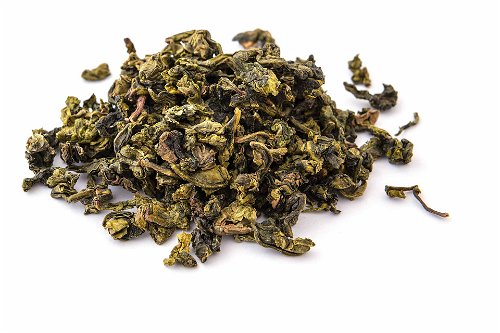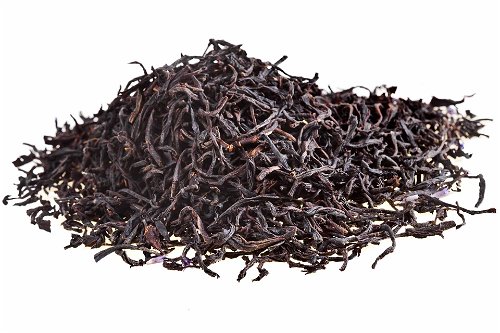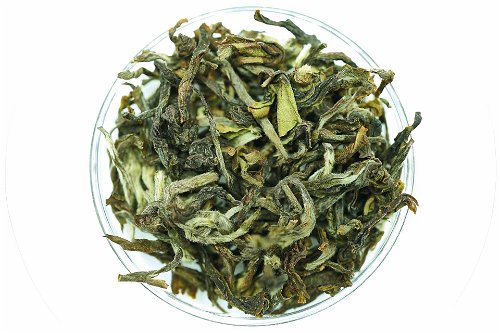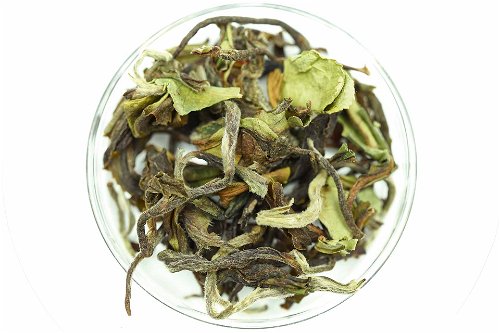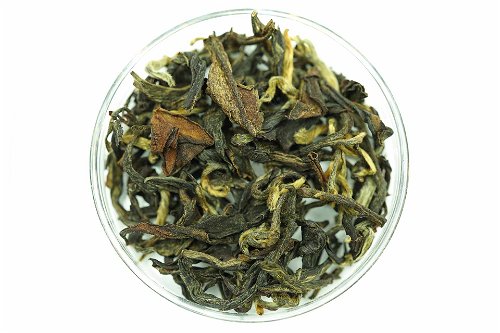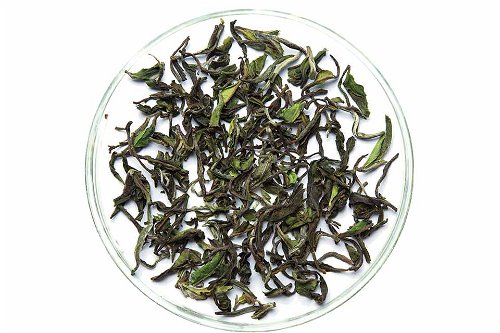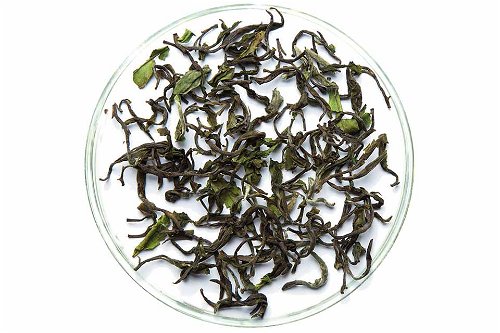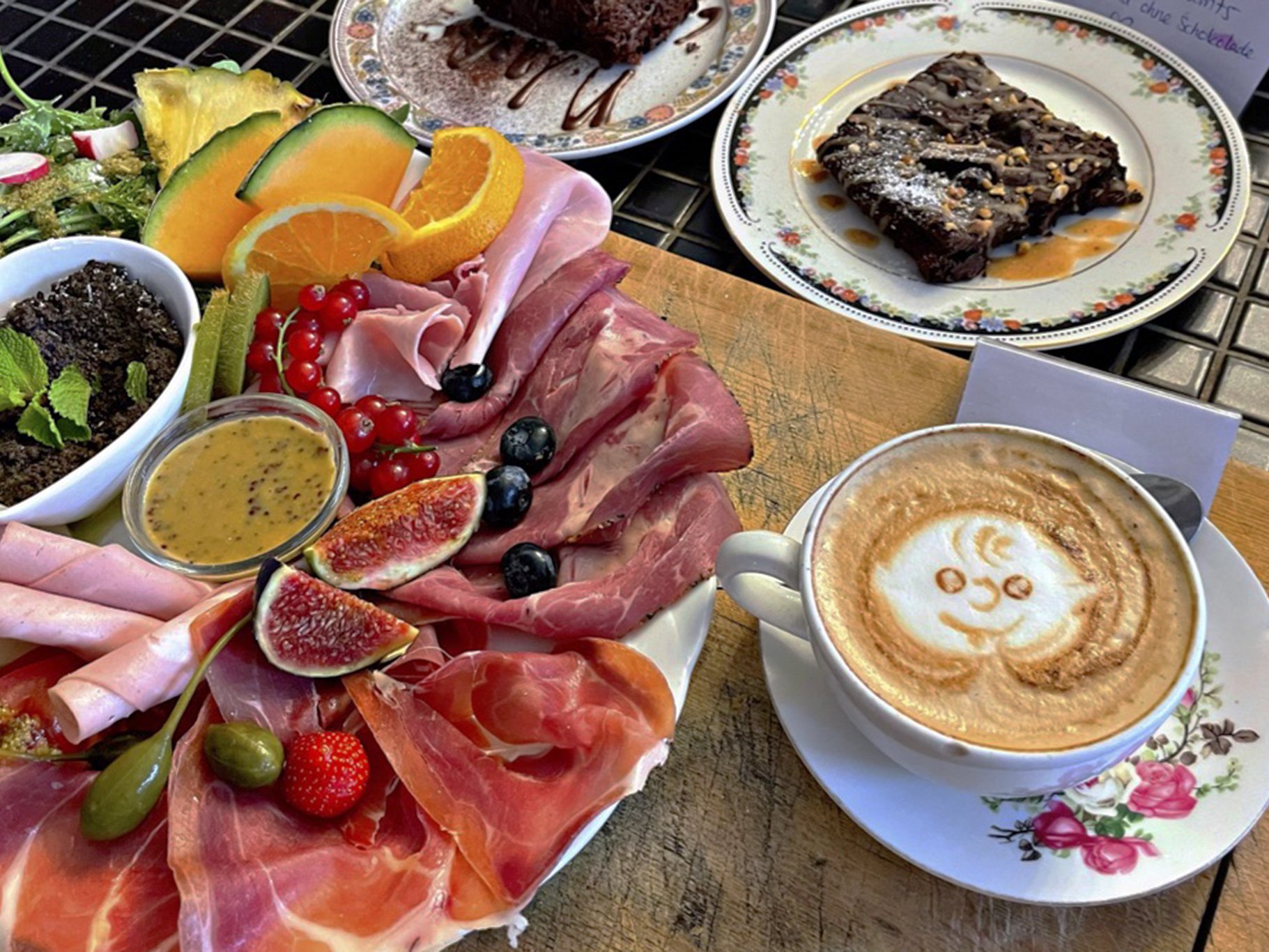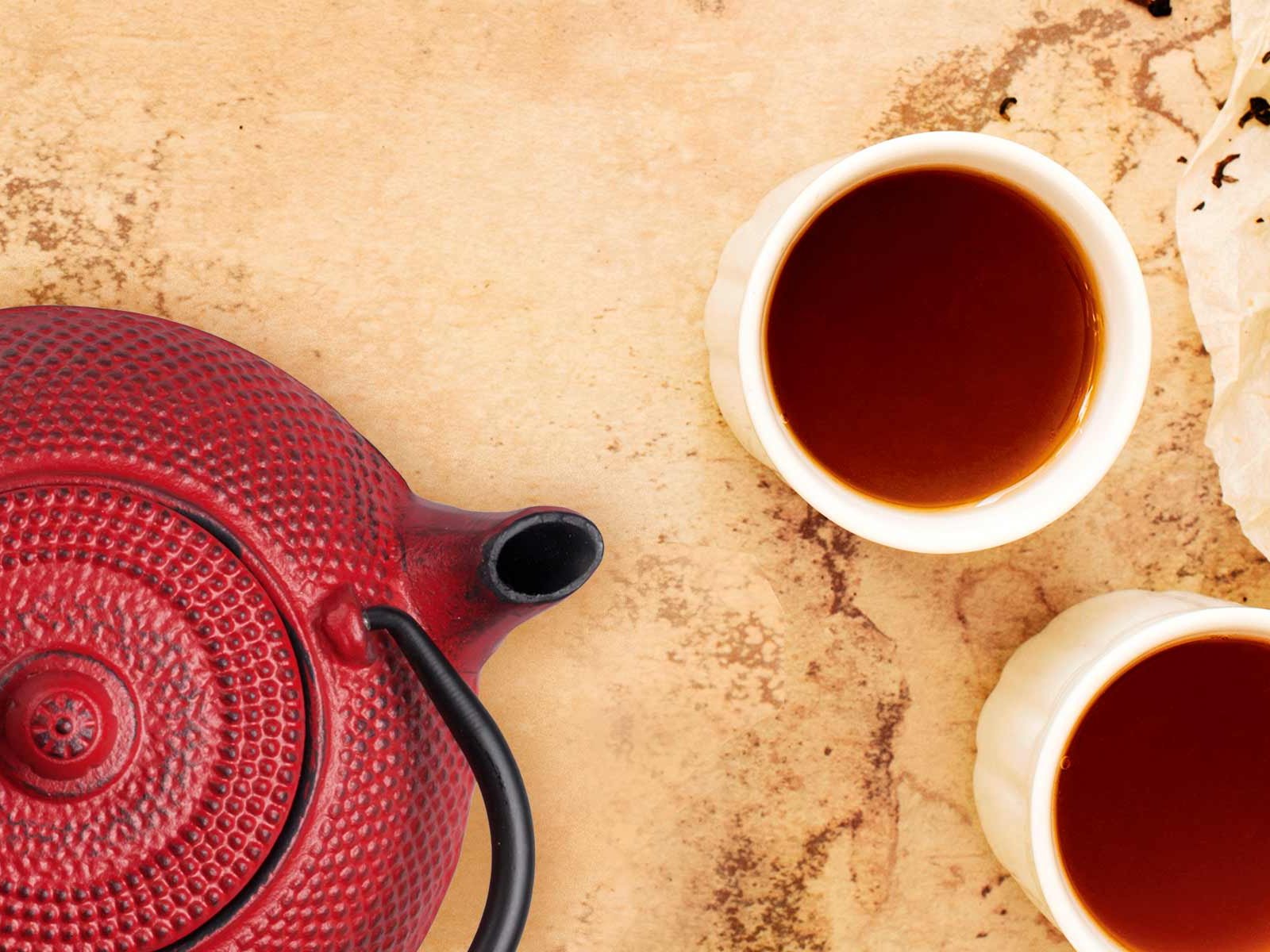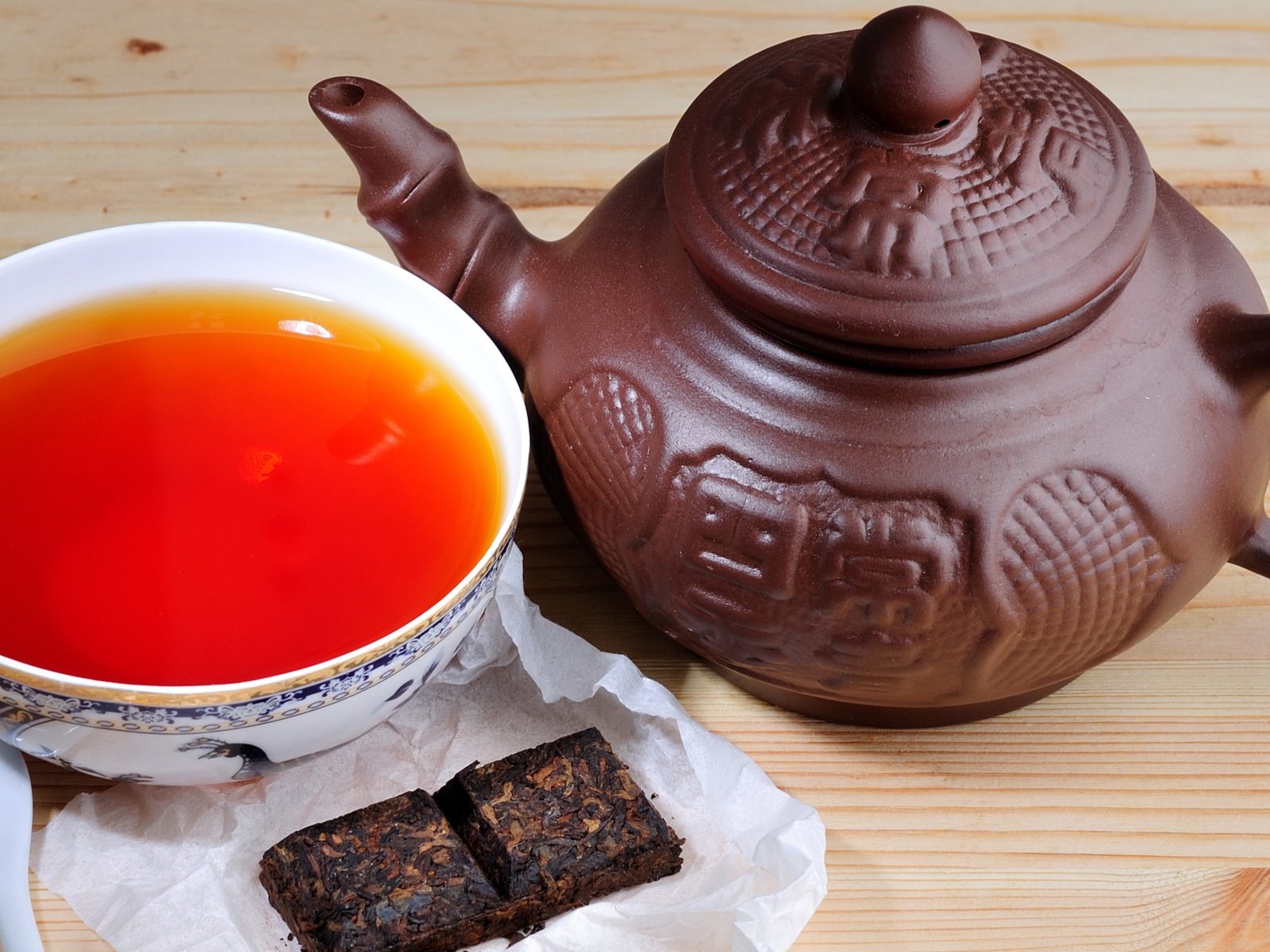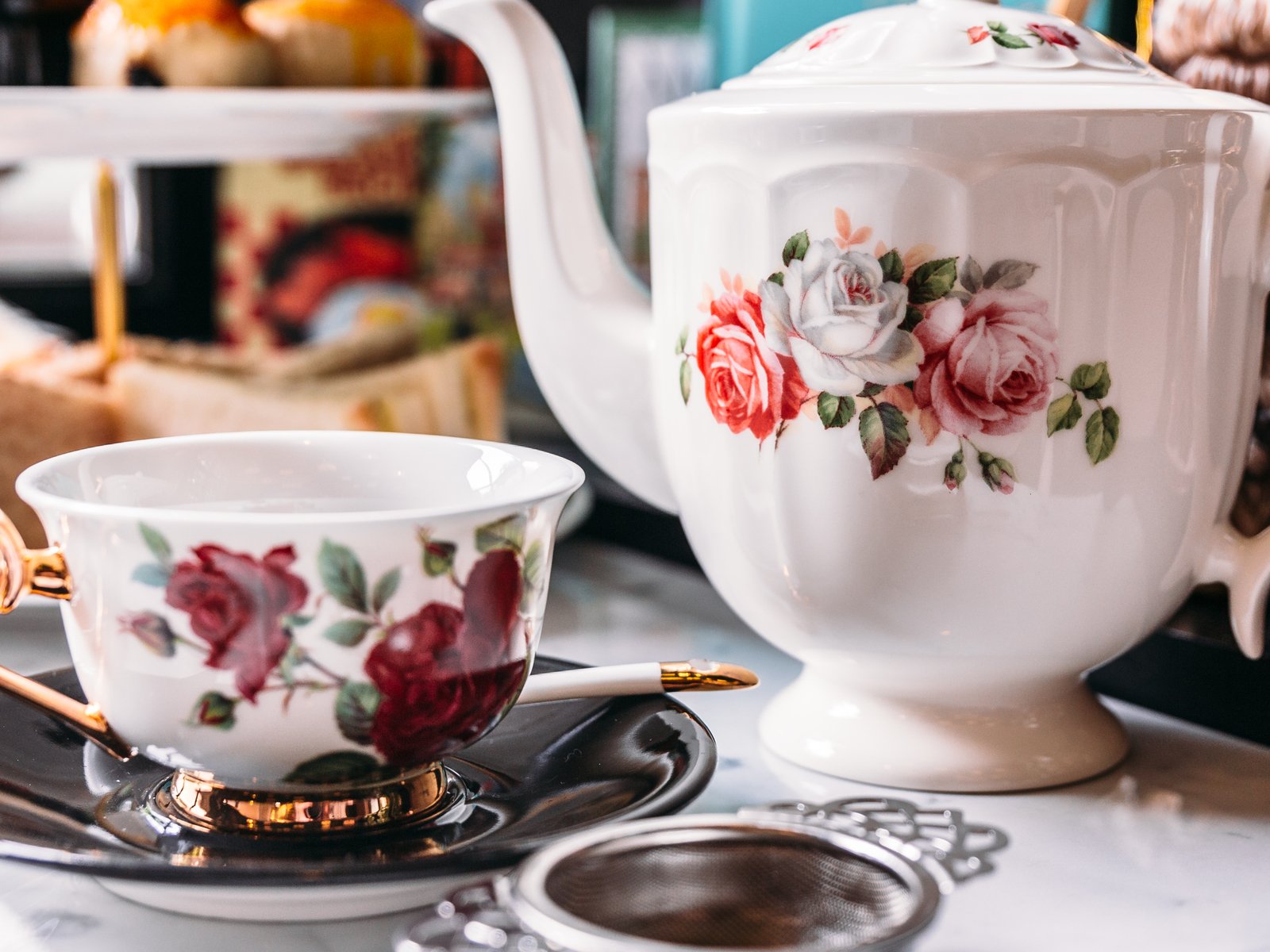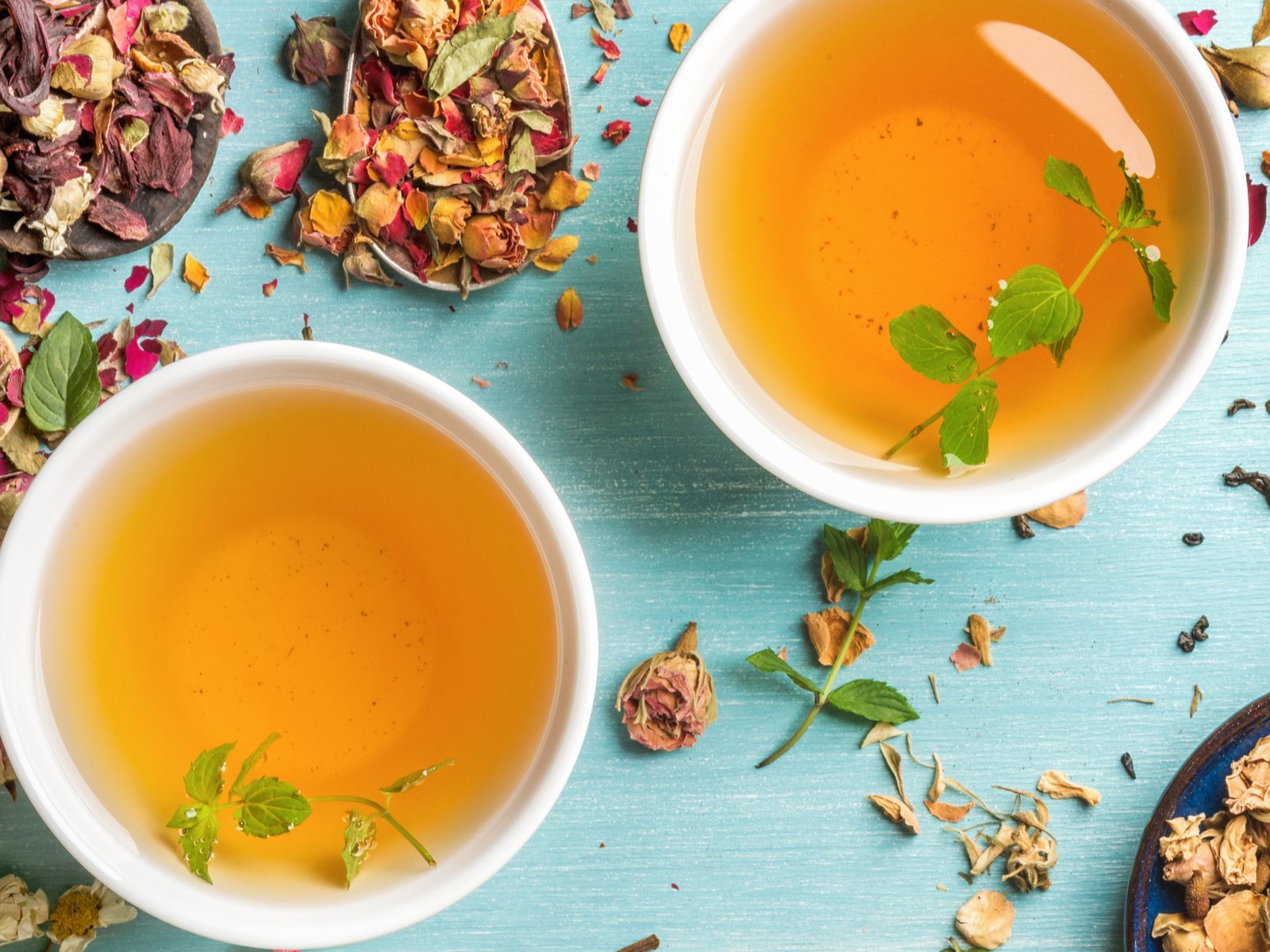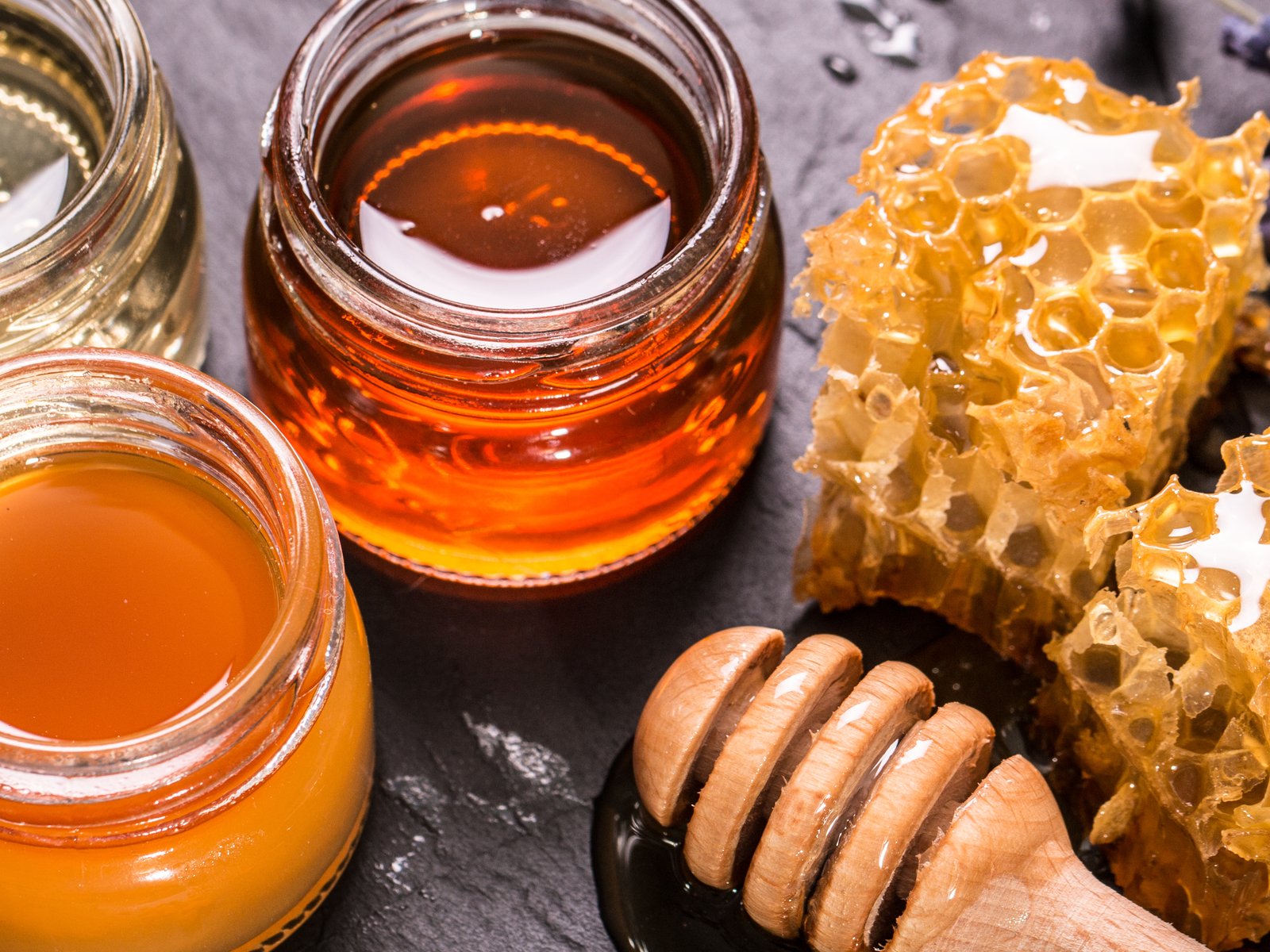Darjeeling: High Altitude and Fine Tea
Darjeeling is one of India's finest teas. Tea experts can differentiate between teas grown on single estates or gardens.
Camellia Sinensis
Deep in the north of India, wedged between Nepal and Bhutan, year after year a small fortune sprouts from the earth. Hundreds and thousands of luscious green plants called Camellia sinensis var. sinensis grow on the fertile rolling hills, while the breathtaking peaks of the Himalayas loom in the background.
Women with baskets on their backs pick the shoots of the plants up to 40 times a year, always following the pattern of 'two leaves and a bud'. This is the home of Darjeeling. The name of the city and region is synonomous with a tea that lovers all over the world appreciate for its delicate aroma.
Altitude
The plants grow at altitudes from 600-2,000m/1,970-6,560ft. This partly explains the unique taste. Nestled in the foothills of the snow capped Himalayas, cold temperatures and occasional frost slow the growth of the plants. India's largest tea producing region, Assam, is much lower with tea plantations between 45-60m/130-200ft above sea level. Even the majority of Ceylon tea from Sri Lanka grows at an altitude of less than 1,200m/3,937ft. The altitude has an advantageous effect on the aroma; hardly any tea in the world tastes as refined and subtle as Darjeeling from the first flush in early spring.
First flush
The pickers only pluck the youngest leaves and the most delicate, tender buds from each plant, 'two leaves and a bud', which accounts for the incomparable delicacy. Furthermore, the Darjeeling region has pristine air quality and very little pollution, thanks in part to an absence of large cities in the surrounding area. In the main, the population derives its income from tea and tourism.
Production and consumption
This pristine environment offers perfect conditions for one of the finest varieties of tea. Rare and precious, Darjeeling tea accounts for less than one percent of India's tea production: of the 1.33 million tons of tea that are grown in India, Darjeeling produces less than 10,000 tons. The tea gardens or single estates here are unique: large plantations of several hundred hectares are usually privately owned. Currently, production is spread over 87 estates.
Comparisons to wine
This might sound familiar to wine drinkers, as each individual estate can be readily identified. The comparison with wine is obvious in many respects, but the analogy is not entirely correct. To equate individual tea gardens with Burgundy cru sites would be going too far. Darjeeling tea is plucked every 5-10 days from February through to November. Four so-called flushes fall into these months: first flush, second flush, monsoon flush and autumn flush. This is very different from the single annual harvest in Burgundy where grapes are picked once, over the course of a few weeks. Nevertheless, climate, aspect, drainage, soil type and picking decisions influence the crop in a unique way in each tea garden. However, as far as consumption is concerned, there is a world of difference between wine and tea.
Tea-drinking nations
After water (excluding bottled water), tea is the most consumed beverage worldwide. Unsurprisingly the major tea growing nations of China, India, Pakistan and Turkey drink the most. Within the top 15 tea drinking nations, the U.K. and Germany are the only European countries that consume significant amounts of tea with Germany drinking more iced tea and the U.K. drinking more hot brewed tea. Unlike alcohol, tea is not forbidden by any religious beliefs, so people of all creeds can and do enjoy a cup of tea.
A potted history of tea
The rise of tea in Europe took off in the 17th century. The first cargo was imported to Europe via Amsterdam in 1606, but when Portuguese princess, Catharine of Braganza, married King Charles II of England in 1662, tea became Britain's favouite beverage. Tea was Catharine's tipple of choice, it was also very expensive and so quickly became the drink for the aristocracy to be seen to enjoy.
Tea clipper races
By the mid 19th century, the first tea gardens were planted in Darjeeling using Chinese plants and trained Chinese workers. With the demise of the East India Companies, tea became a freely traded commodity. The British were masters at getting the fresh harvest from the East to Europe as quickly as possible.
The 'clipper' sailing ships were extremely fast merchant vessels with narrow, streamlined hulls and large sail areas. They brought perishable or valuable goods such as wool, silk, tea (and no doubt opium) to Europe in double quick time.
The first clipper, Rainbow, took 102 days off the previous fastest sailing time. By 1853 the race to get the freshest tea back to market was intense and the rivalry between the Americans and the British so strong that there were literally races to get the tea back first, with the winning cargo fetching an additional sixpence per pound of tea. Such was the enthusiam for tea, speed and competition that large amounts of money were often bet on the clipper races.
Harvesting and drying tea
The first harvest of the year, otherwise known as the first flush, is still considered by many tea drinkers to be the gold standard. Thanks to commercial airliners, tea can arrive on another continent just a few days after plucking and packing. This is particularly worthwhile in the case of Darjeeling tea because the delicate aromas deteriorate quickly. Nevertheless, the primacy of the first flush does not necessarily mean that the first harvest always triumphs over the second - sometimes it is a matter of taste. The second flush, usually picked between April and early June when the plant is growing more strongly, also has its devotees. With muscatel aromas and a copper colour, it tastes more intense and is typically medium to full bodied.
Exposure to oxygen
Green, black and white tea all come from the same plant, the difference lies solely in the processing and in particular its exposure to oxygen. In the case of black tea, the leaves are withered on bamboo mats until they are supple enough to be rolled without tearing. Rolling will impact not only the shape but also the flavour and pungency of the tea.
During rolling the cell walls break open allowing the cell sap to come into contact with air. The tea is left in humid rooms for around 8 - 12 hours and this timing is critical: the leaves lose around a third of their moisture and oxidise; so too much time in humidity could destroy even the best harvest. Once the optimum level of oxidisation has been achieved, the now copper coloured leaves are are dried to prevent further oxidisation occuring.
One style, the lightly oxidised Oolong, forms the basis for one of the more expensive teas in the world: in the Makaibari tea garden, which has been biodynamically certified since 1993, the leaves are harvested at very particular times and exclusively in the light of a full moon. Under the name Silver Tips Imperial, this tea is appreciated by connoisseurs around the world and has been served at at Buckingham Palace.
As with Burgundy, prices reflect rarity and demand
These finest and most delicate shoots are considered energetic and invigorating as well as calming and taste highly aromatic. There is limited production and leaves are hand picked and hand selected, so naturally this is reflected in the price, thus the supply and demand dynamics for the very best specilialty teas is similar to the that of the fine wine market.
Darjeeling
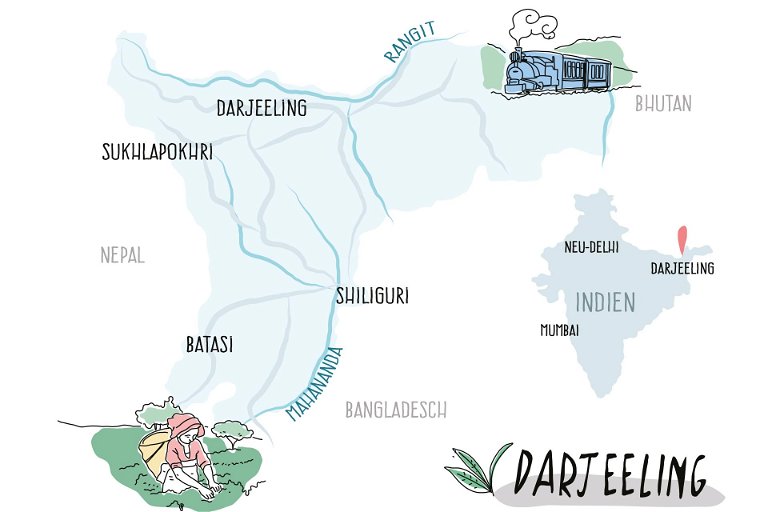
- Makaibari - Probably the most famous tea garden in Darjeeling was founded in 1859 by Girish Chandra Banerjee. It was the first estate to be certified organic in 1988 and biodynamic in 1993.
- Tukvar - The garden, also known as 'Puttabong', is one of the largest estates in Darjeeling and was one of the first tea plantations to be planted in 1852. Tea from here surpassed the price of 10,000 Rupees per kilogram for the ever first time at auction in 1992.
- Rohini - One of 8 new tea gardens in Darjeeling that have been revived post Independence, only 38 hectares of the original garden remained. Since 1996 a further 108 hectares have been planted and although many of these plants are yet to reach maturity the estate is carving out a name for its extremely fine and delicate teas.
- Happy Valley - Organically certified, this garden is also a popular place for tourists to visit, as it is located just north of the town of Darjeeling. The tea plants are up to 150 years old.
- Balasun - Founded in 1871 this small tea garden in the south of Darjeeling offers a breathtaking view over the namesake Balasun River. Their tea usually tastes a little more full-bodied. They also cultivate oranges, ginger and cardamom.
- Steinthal - Planted by a lion loving German priest, Joachim Stoelke, in 1852. This is lovely tea house to visit as it is very near the city of Darjeeling. First flush teas from from here are very popular.
Single estate teas
For a tea to be sold as 'Darjeeling', it must come from one or more of the 87 tea gardens in the region. Often teas from different estates are combined into a blend, but many produce single estate tea as well - individual garden estate teas will bear their name on the label. The gardens themselves are usually several hundred hectares in size and are not always exclusively planted to tea. It is the balance and aromatic interplay that make the blends attractive, whereas Darjeelings from individual gardens are much more representative of the vintage and may show variation year on year.
Some of the gardens are open to tourists and can be visited. We have compiled a selection of the some of the better known estates, including ones where you can visit and/or stay, in the list above.

